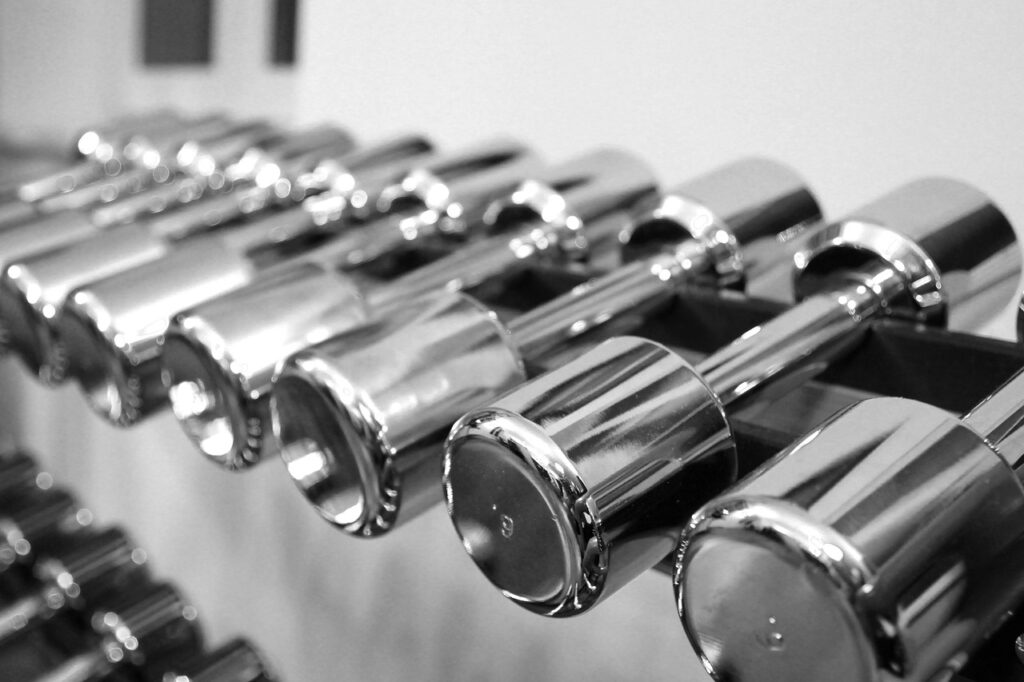Dynamic Grip Training: Why Variable Resistance Matters

Traditional grip training focuses predominantly on static resistance patterns—hand grippers with fixed force curves, barbells with consistent diameter, and holds requiring steady tension maintenance. Whilst these methods build foundational strength effectively, they represent only one dimension of functional grip capacity. Dynamic grip training incorporating variable resistance and unstable implements develops comprehensive hand strength that transfers more completely to real-world applications where gripping demands constantly fluctuate.
Understanding Static Versus Dynamic Grip Training
Static grip training involves consistent resistance throughout the movement range. When you close a hand gripper, the force required remains relatively constant from start to finish. Dead hangs maintain steady tension without variation. Wrist curls with dumbbells provide predictable resistance that doesn’t change unexpectedly during repetitions.
These exercises build strength effectively and offer clear progression paths—you simply add weight or increase resistance levels systematically. The nervous system learns specific movement patterns thoroughly, developing efficient motor pathways for those exact conditions. However, this specificity creates a limitation: strength developed under perfectly consistent conditions doesn’t always transfer completely to variable real-world demands.
Dynamic grip training introduces instability, rotation, or variable resistance that forces constant muscular adjustment. Your grip strength must adapt moment-to-moment to maintain control, engaging stabilizing muscles alongside prime movers. This approach develops more comprehensive strength that handles unpredictable demands more effectively than static training alone.
Benefits of Variable Resistance Training
Enhanced Neural Adaptation
Dynamic training creates richer neural stimulation than static exercises. When resistance varies unpredictably, your nervous system cannot rely on memorized movement patterns. Instead, it must process sensory feedback continuously and adjust motor output in real-time, developing adaptability that proves invaluable during sports and daily activities.
This heightened neural demand accelerates learning whilst building grip strength that functions effectively under diverse conditions. Athletes report that dynamic training produces grip capacity that “feels” more functional and transferable compared to strength built exclusively through static methods.
Comprehensive Muscular Development
Static gripping predominantly stresses prime movers—the large forearm muscles generating crushing force. Dynamic training additionally engages countless small stabilizing muscles within the hand and forearm that maintain precise control despite changing demands.
These stabilizers prove critical during activities requiring fine motor control alongside raw strength. Rock climbers adjusting finger positioning on dynamic holds, martial artists maintaining grips through explosive movements, and manual workers controlling tools under variable loads all depend on these supporting muscles that static training inadequately addresses.
Injury Prevention Through Balanced Strength
Many overuse injuries stem from strength imbalances between prime movers and stabilizers. When large muscles can generate forces that small stabilizers cannot control safely, joint stress accumulates into chronic conditions. Dynamic training develops balanced strength across all muscle groups simultaneously, creating more resilient tissues less prone to overuse injuries.
The constant adjustment required during variable resistance training also improves proprioception—your sense of hand and finger position. Enhanced proprioception allows earlier detection of problematic positioning that might lead to injury, enabling corrective adjustments before tissue damage occurs.
Implementing Dynamic Training Methods
Rotating Handle Implements
Training tools featuring rotating or revolving handles provide excellent dynamic resistance. Unlike fixed handles where your hand remains static, rotating designs require constant grip adjustment to maintain control. Devices like the rolling grip handle create instability that engages stabilizing muscles whilst building primary crushing strength through unpredictable resistance patterns.
These implements prove particularly valuable for athletes in sports involving tool manipulation—racquet sports, golf, baseball—where equipment control requires managing rotation and variable forces simultaneously. The training specificity transfers directly to sport performance in ways that static gripping cannot match.
Thick Bar Training with Rotation
Combining increased bar diameter with rotational elements creates formidable training stimulus. Fat Gripz or similar attachments increase crushing demands, whilst performing exercises with deliberate rotation adds dynamic components. Rotating wrist curls, where you pronate and supinate during the movement, stress forearms through multiple planes simultaneously.
This multi-planar training develops comprehensive forearm strength addressing all movement directions rather than isolated actions. The resulting capacity proves more functional and transferable to diverse activities requiring complex wrist and hand movements.
Instability Training
Introducing instability through unstable implements or surfaces forces constant microadjustments that enhance neural drive and stabilizer engagement. Towel pull-ups create gripping instability compared to solid bars, whilst using suspension trainers for rows demands continuous grip adjustment maintaining hand position.
Water-filled implements represent another instability option—the shifting fluid creates constantly varying resistance that prevents your nervous system from settling into predictable patterns. This variability maximizes training stimulus per repetition whilst developing adaptable grip strength.
Variable Tempo Training
Even with traditional implements, varying movement tempo introduces dynamic elements. Performing wrist curls with deliberately inconsistent speeds—accelerating through portions of the range whilst decelerating through others—creates variable momentum your grip must control.
This approach proves accessible for those without specialized equipment, transforming standard exercises into dynamic challenges through intentional tempo manipulation.
Programming Dynamic Training Effectively
Balancing Static and Dynamic Work
Dynamic training complements rather than replaces static training. Static exercises build maximum strength and provide measurable progression benchmarks, whilst dynamic work develops the adaptability and stabilizer strength that make maximum strength functionally applicable.
Effective programs incorporate both elements, perhaps dedicating 60-70% of training volume to static strength development and 30-40% to dynamic work. This balance builds comprehensive grip capacity addressing all strength dimensions.
Periodization Strategies
Training phases might emphasize different aspects depending on competitive demands or training goals. Off-season strength blocks prioritize static strength development through progressive overload with standard implements. Pre-competition phases increase dynamic training emphasis, developing the adaptable strength that competition conditions demand.
This periodized approach ensures athletes develop maximum strength capacity whilst maintaining the functional adaptability that allows strength expression under unpredictable circumstances.
Exercise Selection and Sequencing
Perform dynamic exercises requiring highest neural demands when freshest—typically early in training sessions. As fatigue accumulates, transition toward more straightforward static work requiring less continuous adjustment. This sequencing maximizes training quality for neural-intensive dynamic work whilst still accumulating productive volume through static exercises.
Sport-Specific Applications
Combat Sports
Grapplers benefit tremendously from dynamic training that mirrors match demands. Opponents resist unpredictably, creating variable forces your grip must handle instantaneously. Training with rotating handles and unstable implements develops exactly this adaptability, complementing technical drilling with physical preparation.
Racquet Sports
Tennis players, badminton athletes, and squash competitors constantly adjust grip tension and positioning through strokes. Dynamic training addressing rotation and variable resistance transfers directly to improved racquet control and reduced injury risk from repetitive unilateral movements.
Climbing
Rock climbing presents constantly changing grip demands as you move across varied hold types under fatigue. Dynamic training prepares hands for this unpredictability, developing the adaptable strength that allows maintaining control on dynamic moves and unexpected hold characteristics.
Occupational Applications
Manual laborers using tools under variable conditions benefit from grip training that mirrors work demands. Dynamic exercises prepare hands for the unpredictable forces encountered during construction work, mechanical repair, and other physically demanding occupations.
FAQ: Dynamic Grip Training
Is dynamic training suitable for beginners?
Beginners should establish base strength through static training for 8-12 weeks before introducing significant dynamic work. This foundation ensures adequate stability and strength supporting the neural demands of dynamic exercises whilst reducing injury risk from introducing excessive complexity prematurely.
How often should I incorporate dynamic grip training?
Most athletes benefit from including dynamic elements in 2-3 weekly grip sessions. This frequency provides adequate stimulus whilst allowing recovery from the heightened neural demands these exercises create. Monitor recovery carefully—dynamic training often feels less fatiguing than static work despite producing significant neural stress.
Can dynamic training replace static grip work entirely?
Whilst dynamic training offers numerous benefits, static training remains valuable for building maximum strength and providing clear progression benchmarks. Optimal programs incorporate both elements, leveraging the unique advantages each training style provides for comprehensive grip development.
What equipment do I need for dynamic grip training?
Specialized rotating handle implements provide excellent dynamic stimulus, though creative use of standard equipment also works. Towels draped over bars, suspension trainers, tempo manipulation, and deliberate rotation during standard exercises all introduce dynamic elements without requiring extensive equipment investment.
How do I progress with dynamic training?
Progression occurs through increased instability, longer time under tension, added external resistance, or reduced rest periods. Unlike static training where adding weight provides clear progression, dynamic training offers multiple progression variables. Track subjective control quality—if exercises feeling increasingly manageable, increase difficulty through any available progression method.
Conclusion
Dynamic grip training incorporating variable resistance and unstable implements develops comprehensive hand strength that transfers more completely to real-world applications than static training alone. By understanding the neural and muscular benefits of dynamic work, implementing appropriate training methods, balancing static and dynamic elements intelligently, and applying sport-specific variations, athletes build grip capacity that functions effectively under unpredictable demands. Whether pursuing competitive performance, occupational capability, or simply comprehensive functional strength, incorporating dynamic training elements transforms grip development from one-dimensional strength building into complete preparation for diverse physical challenges.







